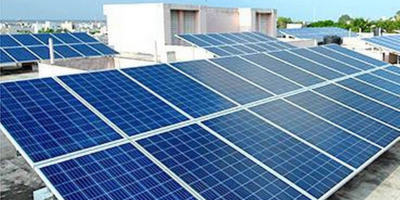As the world moves towards sustainable living, a solar rooftop system has emerged as a smart, eco-friendly, and cost-effective solution for energy needs. Whether you’re a homeowner or a business owner, installing a rooftop solar system can lead to significant savings on electricity bills while reducing your carbon footprint. With increasing awareness and government incentives, now is the perfect time to embrace solar energy.
What is a Solar Rooftop System?
A solar rooftop system is a setup where solar panels are installed on the roof of a building to capture sunlight and convert it into electricity. These systems typically consist of solar photovoltaic (PV) panels, an inverter, mounting structures, wiring, and sometimes a battery backup. Depending on the size of the installation, the system can power anything from a few lights and appliances to an entire home or commercial space.
There are two main types of solar rooftop systems:
- Grid-tied systems – These are connected to the local electricity grid. Any excess power generated is exported to the grid, and users are compensated through net metering.
- Off-grid systems – These operate independently of the electricity grid and require batteries to store power for use during nighttime or cloudy days.
Benefits of Installing a Solar Rooftop System
1. Reduced Electricity Bills
One of the primary reasons people install solar rooftop systems is the long-term savings on electricity bills. By generating your own electricity, you become less dependent on utility companies. For residential users, this can mean up to 80% savings on monthly bills.
2. Environmentally Friendly
Solar energy is clean and renewable. A typical solar rooftop system reduces your reliance on fossil fuels, lowering greenhouse gas emissions and air pollution. This eco-conscious choice contributes positively to combating climate change.
3. Low Maintenance
Once installed, solar rooftop systems require minimal maintenance. Occasional cleaning of panels and annual inspections are usually sufficient. Most solar panels come with warranties of 20-25 years, ensuring long-term reliability and performance.
4. Increased Property Value
Homes and commercial buildings equipped with solar systems often have a higher resale value. Buyers are attracted to properties with built-in energy-saving systems, which means your solar investment can pay off in more ways than one.
5. Government Incentives
In many countries, including India, government subsidies and incentives are available to encourage solar adoption. These can significantly reduce the initial investment cost. Additionally, tax benefits and easy financing options make the transition to solar more affordable.
How to Choose the Right System
When selecting a solar rooftop system, it’s important to consider:
- Energy requirements – Evaluate your current and future energy usage to determine the capacity you need.
- Roof condition and orientation – Ensure your roof is structurally sound and oriented to maximize sunlight exposure.
- Budget and incentives – Compare costs and research available subsidies to make an informed decision.
- Quality of components – Choose reputable solar panel and inverter brands for better efficiency and durability.
Installation Process
The installation process is straightforward but should always be done by a professional installer. Here’s a brief overview:
- Site assessment and planning
- Design of the solar system layout
- Procurement of equipment
- Installation of mounting structures and panels
- Wiring and inverter setup
- Testing and commissioning
Once installed, you can monitor the system’s performance through digital apps or displays, giving you complete control over your energy production.
Future of Rooftop Solar
With rising electricity costs and growing environmental concerns, the demand for rooftop solar is expected to grow rapidly. Technological advancements like solar shingles and AI-based energy monitoring systems are making solar even more efficient and user-friendly.



